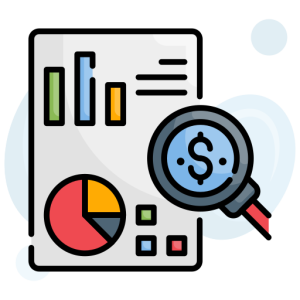Financial Management Project 2025

Financial Management 2025 is the practice of managing a company’s finances. It includes planning, estimating and budgeting expenses, tracking costs and monitoring revenue. It also includes determining how to pay for operations and growth.
Project accounting is a critical part of financial project management. It provides key metrics and guardrails for keeping projects on track.
FREE Financial Management Project Test Online
Financial Project Management Software
Financial project management software helps finance teams save time and money by automating and streamlining repetitive, administrative tasks. These tools can be part of an enterprise resource planning (ERP) system or standalone financial applications that integrate to form a comprehensive solution.
The best financial management software includes features that help finance teams manage the entire lifecycle of projects. These include tools for program and project budgeting, costing, and tracking. They also include capabilities to visualize cashflow inflow and outflow, and provide support for scenario planning and forecasting.
Moreover, the best financial management software for project managers allows finance teams to track costs and revenue in real-time. This software also lets them collaborate with team members, and provides easy-to-use dashboards to manage data. It can even be used to manage invoices and other payments. This is especially useful for businesses that handle financials for clients. Examples of this type of software are Freshbooks, Oracle NetSuite and Sage Intacct.
Construction Project Financial Management Software
In the construction business, every financial process matters. From estimating to submitting invoices, every action impacts the company’s financial health in the long run. The leading external financial challenges for construction companies include rising materials’ prices and uncontrolled project costs. If your company lacks techniques and tools to handle these challenges, it will be difficult to manage your financial performance.
Using a construction project management software with built-in tools can help you cut down expenses and stay on budget. It will also help you manage the entire project lifecycle from start to finish. Moreover, it will provide you with the financial data you need to make better decisions.
Many construction management solutions offer collaboration features to facilitate communication between team members and clients. They can also help you manage field operations and project scheduling. Some programs also come with a built-in document management system, quality assurance, and safety tools. They can also be integrated with other key construction software systems or modules, like estimating and accounting. This way, you can create a comprehensive financial solution that will keep your construction project on budget and deliver projects on time.

Enterprise Project Financial Management Software
Managing project finances is essential for any organization, and top-notch enterprise project financial management software makes it easy to stay on track. These tools eliminate computation errors, maintain audit trails and comply with accounting standards. They also reduce manual work for finance teams and improve data quality.
One of the most important elements in project finance is revenue recognition. A top-rated tool will integrate project progress with revenue recognition so that business leaders have an accurate picture of the current state and future direction of the company’s projects. This helps make better decisions about future investments and growth.
Sage offers a wide range of finance and accounting tools, including a general ledger, accounts payable and receivable, cash and currency management, and deferred revenue accounting. It also features a clean UI and can be customized to fit your company’s needs. It is a good choice for distribution, manufacturing, and professional services companies. It is also cloud-based and has excellent security. Microsoft also has a great suite of finance and accounting tools, including a powerful planning and budgeting tool. It has a clean UI and is easy to navigate. It also includes automation and workflows to help streamline processes.
Examples of Financial Risks in Project Management
There are several types of financial risks in project management. These include cost, schedule and performance risks. The latter is the risk that the project will fail to produce results that match the specifications that were set prior to its execution. This can be caused by insufficient staff or an ineffective technology solution.
Financial risk is a major concern for any business, and it can cause significant disruptions. It can also lead to project delays and increased costs. In addition, financial risks can be systemic, meaning that they affect multiple companies at once, or unsystematic, which means that they are specific to a single company.

It is important to understand the difference between these two categories, because they require different strategies for managing them. For example, unsystematic financial risk can be minimized by using risk transfer mechanisms. This involves transferring some or all of the project’s risk to third parties, such as insurance providers, banks and sponsors. It can also be minimized by evaluating the nature, coverage and appropriateness of insurance policies.
Financial Analysis in Project Management Pdf
Project success depends on a number of factors, including budget, scope and time. A key factor for project viability is a well-executed project financial analysis. To achieve this, you must determine the amount of people, equipment, materials and other sources needed to accomplish each activity. You must then estimate the cost of these resources and when they will be needed. This information can then be used to create a detailed project budget.
In addition to budgeting, the project manager must also perform ongoing cost control. This includes assessing the current status of activities, comparing actual costs to forecasted amounts and evaluating the impact of changes in project plans. This type of ongoing analysis requires complementary procedures to those found in traditional financial accounting, such as variance reporting and simple forecasting.
Trying to manage project finances without a good software solution can be costly. With Runn, you can see a complete picture of your financials and make more informed decisions about project funding. With daily billing charts and customizable dashboards that feature cost data, you can view the project’s expense reports, budget breakdowns, revenue generated and more in one place. Get started today.

Financial and Budgetary Considerations in Project Management
Project financial management is the process of managing a project’s budget and ensuring that work is completed within that budget. It includes planning, estimating, funding, and tracking and reporting costs. It also includes ensuring that the agency is able to manage project financial resources throughout their life cycle.
Ultimately, financial management is about maximizing profits and reducing risk. It involves using the right tools and techniques to measure costs, calculate return on investment, and improve the overall value of your company. It requires a strong understanding of the business environment, institutional procedures and departmental systems.
Good project finance management is essential to IFAD’s ability to deliver on its development commitments. It encompasses the budgeting, accounting, internal control, funds flow and financial reporting arrangements that ensure that IFAD’s loan and grant disbursements are spent appropriately and recorded correctly. It also enables IFAD to demonstrate to donors and financiers that it is fulfilling its development commitments and is managing its resources effectively. IFAD’s financial management processes are based on international standards.
Financial Aspects of Project Management
Project financial management is a critical aspect of project management. It involves identifying what resources are required for a project, such as labor, materials, IT software/hardware, and consultants. It also includes tracking budgeted cost, actual cost, and billing status. A good project manager should be able to estimate and track these costs to avoid overspending.
This type of management is essential for enterprise organizations that want to maximize return on investment while delivering projects within their profit parameters. It requires regular reconciliation of invoices, payments, and other financial documents to ensure effective capturing of all data. This allows managers to stay ahead of financial movement and make the right strategic decisions accordingly.

However, the biggest challenge in financial management is ensuring that a project stays within scope. Many projects suffer from cost overruns due to lack of proper project management. To avoid this, enterprises must implement key technology measures to ensure greater control of their project financials. These include leveraging project accounting and implementing financial management workflows. This enables teams to make data-driven decisions and prevent costly scope creep.
Financial Forecasting in Project Management
Financial forecasting is the process of analyzing past, current, and future fiscal data and conditions. It helps businesses identify trends that may affect strategic goals and policies in the near or long-term.
This can be done through various methods, including historical prognoses and sales forecasting. The most common of these is sales forecasting, which involves predicting how many products or services a business will sell during a certain fiscal period. Sales prognoses are important because they help finance teams connect and collaborate with the rest of the company more effectively.
Another method of financial forecasting is using a financial management tool that automatically collects operational and financial data and KPIs in one place. This can be helpful in preparing a financial forecast, as it makes the process faster and more accurate. However, this type of software is usually expensive and requires technical knowledge to use. Fortunately, there are cheaper alternatives that can still provide a high level of accuracy. This includes using Excel spreadsheets, which have formulas that calculate costs, earned value, and profit based on a variety of factors.